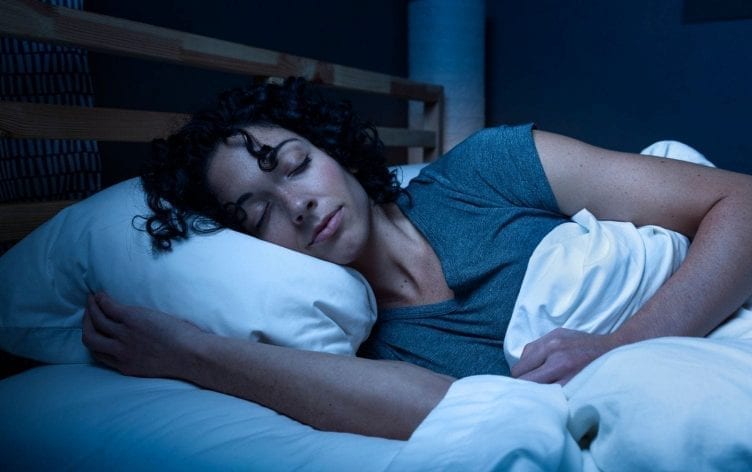
In today’s world, many of us are sleep-deprived. In fact, according to the Centers for Disease Control and Prevention, more than 1/3 of Americans don’t get the recommended 7 hours per night. And experts acknowledge some people may need as many as 9 hours a night. So, in reality, the number of sleep-deprived people is likely even higher.
We know sleep deprivation has major effects on the body, from problems with immunity to less creativity. Another potential downside to lacking shuteye: Not getting enough REM, or rapid eye movement, sleep. “Since the majority of people do not get enough sleep in general, the world is chronically REM-deprived,” says Max Kerr, DDS, a dental sleep expert. REM sleep usually occurs toward the end of the sleep phase, so it’s often the first cycle to be affected when people aren’t getting enough sleep.
Here, sleep experts explain what you need to know about REM sleep, why you want to be sure you’re getting enough and how to get more of it if you’re currently lacking.
WHAT IS REM SLEEP, EXACTLY?
First, a quick refresher on sleep cycles.
“We sleep in 90-minute cycles,” explains Pavan Madan, MD, a psychiatrist at Community Psychiatry. Each cycle is divided into two phases: non-REM and REM.
Here’s what the typical sleep cycle looks like:
- Light sleep (non-REM): During this phase, you fall asleep, but you can more easily wake up.
- Deep sleep (non-REM): This is the type of sleep your body needs to feel rested in the morning. If you wake up during deep sleep, you are likely to feel groggy at first.
- REM sleep: After deep sleep, rapid eye movement sleep begins, which is characterized by your eyes moving behind your eyelids. This is when you dream and, if you wake up during this cycle, you may remember your dream.
THE CYCLE AFTER REM SLEEP
After REM, the cycle repeats. But it’s a little more complicated than that. “REM sleep usually occurs 70–90 minutes into the first sleep cycle and is relatively short, followed by a return of light sleep, which then begins the cycle again,” explains Julia Kogan, PsyD, a health psychologist who specializes in stress and insomnia. “About 3 hours or so into the night (at the end of the second sleep cycle), REM sleep returns for a longer period. For the rest of the night, non-REM and REM sleep alternate in approximately 90-minute cycles.” As the sleep cycles continue, REM sleep continues to get longer.
WHY GETTING ENOUGH REM SLEEP IS IMPORTANT
“While much about REM sleep still remains a mystery, there have been some recent discoveries about its function,” Kerr says. “It is believed that REM sleep allows us to encode memories without the emotional tone surrounding the remembered experience. Our most salient memories are often surrounding highly emotional times, REM is the mechanism that allows us to recall the memory without having to go through the emotion every time we remember the experience.”
REM may also play a role in accurately reading expressions and emotions in other people’s faces, linking memories together, and seeing the big picture Kerr says. “Imagine that each day you’re awake, you’re gathering pieces of a greater puzzle. It’s thought that REM allows you to step back and look at the picture on the puzzle subconsciously.” This is why we often feel we have a “breakthrough” after a good night’s rest.
HOW DO YOU KNOW IF YOU’RE GETTING ENOUGH REM SLEEP?
Here’s some good news: If you’re getting enough sleep regularly, you’re probably getting enough REM sleep, according to Kogan. Another sign you’re doing OK with REM sleep is remembering your dreams regularly (though not remembering them doesn’t necessarily mean you’re not getting enough).
On the flip side, there are some signs to watch out for that could indicate you’re lacking in the REM department, though they might be tricky to spot, Kerr says. They include:
- Having difficulty processing highly emotional situations
- Not being able to “get past” larger problems (i.e., making the same mistake many times over)
- Feeling “fuzziness” or brain fog
REM sleep can also be negatively impacted by certain antidepressants, blood pressure medications, cough, cold and flu medications containing alcohol, and other medications, Kogan says. Conditions that affect your sleep like depression, anxiety, menopause, narcolepsy, diabetes and cardiovascular disorders may also take your REM sleep down a notch.
Lastly, if you’re waking up after a full night’s sleep unrefreshed, you might have obstructive sleep apnea, Kogan says. “This condition interferes with nighttime breathing and causes sleep disruption throughout the night, decreasing the time spent in REM sleep and deep sleep stages.”
If you suspect you’re not getting enough REM sleep, there are some actions you can take to find out for sure. “Although not nearly as accurate as physician-ordered sleep studies, the wearable device market has gotten highly capable in tracking sleep stages,” Kerr says. “The REM stage should occupy 20–25 percent of total sleep time. My suggestion would be to use a wearable device to get an idea of how adequate your sleep stages are.”
If you notice something amiss, Kerr suggests asking your doctor for a sleep study to get to the bottom of it. These are often covered by insurance, and in many cases, can be done in the comfort of your home.
5 WAYS TO GET MORE REM SLEEP
The best thing you can do to promote adequate REM sleep, according to Kogan, is to follow basic sleep hygiene practices. “This includes keeping a regular sleep schedule, limiting devices right before bed, using the bed only for sleep and sexual activity, and spending the last 30–60 minutes before bed relaxing and unwinding for a restful night of sleep.”
Beyond that, experts suggest the following strategies to enhance your deeper sleep stages:
1. Get enough exercise. Engaging in purposeful movement throughout the day is one of the best ways to ensure you sleep well at night, Kerr says. “Exercise truly is medicine.”
2. Make sure you’re getting 7–8 hours. Since most REM sleep happens in the last third of the night, it’s important to ensure you’re hitting the 7-hour mark, Kogan notes. “It’s different for everyone, but in general, 7– 8 hours of sleep is recommended for most adults.”
3. Create a calming pre-bedtime routine. If you ruminate and worry at night or feel anxiety in anticipation of the next day at bedtime, you’re not alone. “Diaphragmatic breathing can slow down some of the pathways implicated in anxiety, help people alleviate their fear, and consequently, promote REM sleep,” says Dr. Leela R. Magavi, a psychiatrist. “Listening to calming music and recounting positive memories from the day can also help.”
READ MORE > 7 SLEEP TRENDS WORTH TRYING
4. Avoid alcohol before bed. “Alcohol before bed and in large quantities can reduce the amount of time we spend in REM sleep,” Kogan says. Her advice: Limit alcohol to one drink per day at least 3 hours before bed.
5. Promote a feeling of safety while you sleep. “Weighted blankets and white noise create a sense of safety, and can psychologically mimic the feeling of being held and loved,” Magavi says. “We all have our inner child who wants to feel safe and secure.” Anything you can do to induce those feelings may lead to better sleep overall.
Unlock an experience that’s like having a dietitian, trainer and coach at your fingertips. Sign up for Premium for expert guidance and tools to help you reach your personal health goals.





